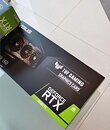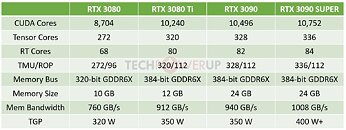
NVIDIA GeForce RTX 3090 SUPER Founders Edition Pops Up on Taobao
An unreleased NVIDIA GeForce RTX 3090 SUPER Founders Edition graphics card was last spotted just over a year ago. A fortunate member of the Chinese NGA discussion board provided a close-up shot of a shroud bearing "super." A new leak gives us a full view of the RTX 3090 SUPER FE with prominent branding—KittyYYuko declared: "WTF, I have indeed heard of this leak before" upon posting this discovery to social media.
According to ITHome, the example from last year appeared to be a publicly released variant of "an unpackaged GeForce RTX 3090 Ti," and the latest finding seems to be identical. A seller, tbNick_dn86z, has created an entry for his GeForce RTX 3090 SUPER Founders Edition card with a value of 9999 RMB (~$1370) on Xianyu (Taobao's second hand market)—it is advertised as being "original and not modified, with a pure black casing." When confronted about identifying any apparent differences between the SUPER and officially launched Ti version, tbNick_dn86z confirmed that they are largely the same (minus external branding)—a matching device ID is shared across both variants.
According to ITHome, the example from last year appeared to be a publicly released variant of "an unpackaged GeForce RTX 3090 Ti," and the latest finding seems to be identical. A seller, tbNick_dn86z, has created an entry for his GeForce RTX 3090 SUPER Founders Edition card with a value of 9999 RMB (~$1370) on Xianyu (Taobao's second hand market)—it is advertised as being "original and not modified, with a pure black casing." When confronted about identifying any apparent differences between the SUPER and officially launched Ti version, tbNick_dn86z confirmed that they are largely the same (minus external branding)—a matching device ID is shared across both variants.























































